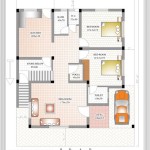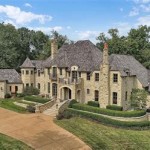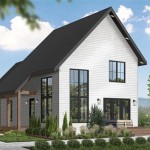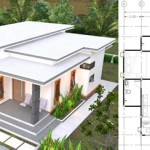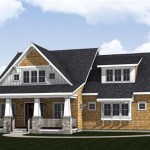Log House Plans With Walkout Basement: Expanding Living Space and Embracing Natural Landscapes
Log houses evoke a sense of rustic charm and connection to nature. For those considering building a log home, incorporating a walkout basement into the design presents a unique opportunity to expand living space, maximize functionality, and capitalize on the natural slope of a property. Log house plans with walkout basements offer numerous advantages, providing flexibility for various lifestyle needs and enhancing the overall value of the home. A well-designed walkout basement can seamlessly integrate with the surrounding landscape, creating a natural extension of the living area.
The combination of log home aesthetics and the functionality of a walkout basement results in a dwelling that is both visually appealing and practical. This design approach is particularly well-suited for properties with uneven terrain, where a standard basement might not be feasible. By carefully considering the site conditions and incorporating the walkout basement into the log house plan, homeowners can create a space that is both comfortable and connected to the outdoors.
Optimizing Site Conditions and Foundation Design for Walkout Basements
The design and construction of a walkout basement are heavily influenced by the specific characteristics of the building site. The slope of the land is a primary factor, as it determines the extent to which the basement can be exposed at the rear of the house. A significant slope allows for a full walkout, where the basement is essentially ground level on one side, providing direct access to the outdoors. However, even on sites with less pronounced slopes, a partial walkout can be achieved with thoughtful grading and landscaping.
Foundation design is another crucial consideration. The foundation walls of a walkout basement must be structurally sound and properly insulated to prevent moisture intrusion and maintain a comfortable temperature. Adequate drainage is essential to prevent water from accumulating around the foundation, which can lead to leaks and other problems. This may involve installing a perimeter drain system, grading the surrounding soil to direct water away from the house, and applying a waterproof coating to the exterior of the foundation walls.
Furthermore, the type of soil on the building site can influence the foundation design. In areas with unstable soil, such as clay or sand, it may be necessary to reinforce the foundation with additional support, such as pilings or soil stabilization techniques. A geotechnical survey can provide valuable information about the soil conditions and help determine the most appropriate foundation design for the specific site. Local building codes and regulations must also be considered to ensure that the foundation meets all applicable requirements.
Integrating the walkout basement into the overall log house plan requires careful coordination between the architect, engineer, and builder. The design should take into account the aesthetic goals of the homeowner, the functional needs of the space, and the specific characteristics of the building site. By carefully considering these factors, it is possible to create a walkout basement that is both functional and visually appealing, enhancing the overall value and enjoyment of the log home.
The orientation of the log house on the property is also important. Maximizing natural light in the walkout basement can make the space feel more open and inviting. This may involve orienting the house so that the walkout faces south or east, allowing sunlight to penetrate the basement windows and doors. Proper ventilation is also essential to prevent moisture buildup and maintain air quality. This can be achieved through the use of operable windows, exhaust fans, and a well-designed air conditioning system.
Expanding Living Space and Functionality With a Walkout Basement
One of the primary benefits of a walkout basement is the significant expansion of living space that it provides. This additional space can be used for a variety of purposes, depending on the homeowner's needs and preferences. Common uses for walkout basements include: guest suites, home offices, recreation rooms, home theaters, workshops, and storage areas. The flexibility of the space allows homeowners to customize it to suit their specific lifestyle.
A guest suite in a walkout basement provides a private and comfortable space for visitors. This can be particularly useful for families who frequently host guests or have elderly relatives who need a separate living area. A home office in a walkout basement offers a quiet and dedicated workspace, away from the distractions of the main living area. This can be especially beneficial for those who work from home or need a space to focus on personal projects. A recreation room in a walkout basement is a great place for families to relax and have fun. This space can be equipped with a pool table, ping pong table, or other games. It can also be used as a media room for watching movies or playing video games.
A home theater in a walkout basement provides a dedicated space for enjoying movies and other entertainment. This space can be equipped with a large screen, surround sound system, and comfortable seating. A workshop in a walkout basement offers a dedicated space for hobbies and DIY projects. This space can be equipped with tools, equipment, and storage areas. A storage area in a walkout basement provides ample space for storing seasonal items, holiday decorations, and other belongings. This can help to keep the main living area clutter-free and organized.
In addition to expanding living space, a walkout basement can also enhance the functionality of the log home. The walkout access provides a convenient way to access the backyard and other outdoor areas. This can be particularly useful for those who enjoy gardening, outdoor entertaining, or simply spending time in nature. The walkout basement can also be used as a mudroom, providing a place to store shoes, coats, and other outdoor gear. This can help to keep the main living area clean and tidy.
The ability to easily access the backyard from the walkout basement can significantly enhance the outdoor living experience. A patio or deck can be built adjacent to the walkout entrance, creating a seamless transition between indoor and outdoor spaces. This provides a comfortable and inviting area for outdoor dining, entertaining, or simply relaxing in the sunshine. The walkout basement can also be used to store outdoor equipment, such as lawnmowers, gardening tools, and bicycles.
Integrating Walkout Basements With Log Home Aesthetics
Maintaining the aesthetic appeal of a log home while incorporating a walkout basement requires careful planning and design. The exterior of the walkout basement should be seamlessly integrated with the overall architectural style of the log house. This can be achieved through the use of natural materials, such as stone, wood, and brick, that complement the log construction. The design should also take into account the surrounding landscape, ensuring that the walkout basement blends harmoniously with the natural environment.
One approach is to use stone veneer on the exterior of the walkout basement walls. This can create a rustic and natural look that complements the log construction. The stone veneer can be chosen to match the color and texture of the surrounding rocks and boulders. Another approach is to use wood siding on the exterior of the walkout basement walls. This can create a warm and inviting look that complements the log construction. The wood siding can be stained or painted to match the color of the logs.
Incorporating landscaping into the design of the walkout basement can further enhance its aesthetic appeal. Planting trees, shrubs, and flowers around the perimeter of the walkout basement can help to soften the transition between the house and the surrounding landscape. A retaining wall can be used to create a level area for a patio or deck, while also providing a visually appealing backdrop. The use of native plants can help to create a natural and sustainable landscape that requires minimal maintenance.
The interior of the walkout basement should also be designed to complement the log home aesthetic. Using natural materials, such as wood, stone, and brick, can help to create a warm and inviting atmosphere. The use of exposed beams and rafters can add a rustic touch. The lighting should be carefully chosen to create a comfortable and inviting ambiance. Natural light can be maximized through the use of large windows and doors. Artificial lighting can be used to supplement the natural light and create a warm and inviting atmosphere.
The furniture and décor should also be chosen to complement the log home aesthetic. Using comfortable and inviting furniture, such as leather sofas and wooden chairs, can help to create a relaxing atmosphere. The décor should reflect the homeowner's personal style and preferences. Using natural elements, such as wood carvings, stone sculptures, and floral arrangements, can help to create a connection to the natural world. By carefully considering these design elements, it is possible to create a walkout basement that is both functional and aesthetically pleasing, enhancing the overall value and enjoyment of the log home.

Small Cottage Plan With Walkout Basement Floor House Plans Lake

House Plan 3 Bedrooms 2 Bathrooms 4908 Drummond Plans

Walkout Basement House Plans To Maximize A Sloping Lot Houseplans Blog Com

Small Cottage Plan With Walkout Basement Floor

Plan 35112gh Log Home Made For Majestic Views Cabin House Plans
Log Cabin Home 3 Bdrm Bath 2057 Sq Ft Plan 132 1401

Dream Lake House Plans With Walkout Basement

Small Cottage Plan With Walkout Basement Floor

House Plans With Walk Out Basements Page 1 At Westhome Planners

Pine Cabin On Walkout Basement Beautiful Wood Beams Loghome Pinehome Woodhome Woodcabin Dreamhom Small Lake Houses Cottage House Plans

